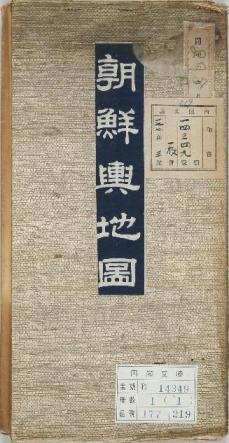 Below is a map of Korea published in Japan in 1894. The map is called Chosen Yochizu (朝鮮輿地図), and was originally brought to Japan by Kim Ok-gyun (金玉均 - 김옥균) in 1884.
Below is a map of Korea published in Japan in 1894. The map is called Chosen Yochizu (朝鮮輿地図), and was originally brought to Japan by Kim Ok-gyun (金玉均 - 김옥균) in 1884.The map shows the non-existent island of Argonaut labeled as "Takeshima" (竹島) and the Korean island of Ulleungdo (鬱陵島) labeled as "Matsushima" (松島). Liancourt Rocks does not appear on the map since they are ninety-two kilometers farther southeast of Ulleungdo, and are, therefore, off the edge of the map. (For a detailed view of the map, go to Mr. Tanaka's site HERE.)
On his blog, "Fusou Note - 扶桑雑記," Aki has written a very good post HERE on the map and on Kim Ok-gyun, so please refer to Aki's blog for more information since I will not repost it here without his permission.
--- Chosen Yochizu (Map of Chosun) ---
This drawing is a large detailed survey map of that country that Kim Okgyun brought here when he left his country the other year. While he was alive, he always kept this map with him. However, when he sailed to Shanghai the other day, he somehow left this map to a noble of our country. Being affected by current events, we traced the map on a smaller scale through the courtesy of the person. In the drawing, positions of the eight provinces, various counties, prefectures, districts, army bases, naval bases, division headquarters, scenic spots, representative villages, mountains, rivers, capes, promontories, bays, ports, and islands are shown as plain as day. This is what he surveyed by using the national power before. In addition, regions around Seoul, Wonsan, Busan, Incheon and Hangang are shown separately in insets for convenience's sake. Also, a table of distances from Seoul to representative places is printed on the periphery of the drawing. Whereas Chosun often become the talk of the town these days, there has not been a map like this. This is indeed a drawing of matchless clearness. Since our company, hoping to contribute to our country, will distribute this map with as cheap price as possible, please buy it in the bookstores and take a look inside.
------ Price: 30 sen, Postage: 4 sen -------
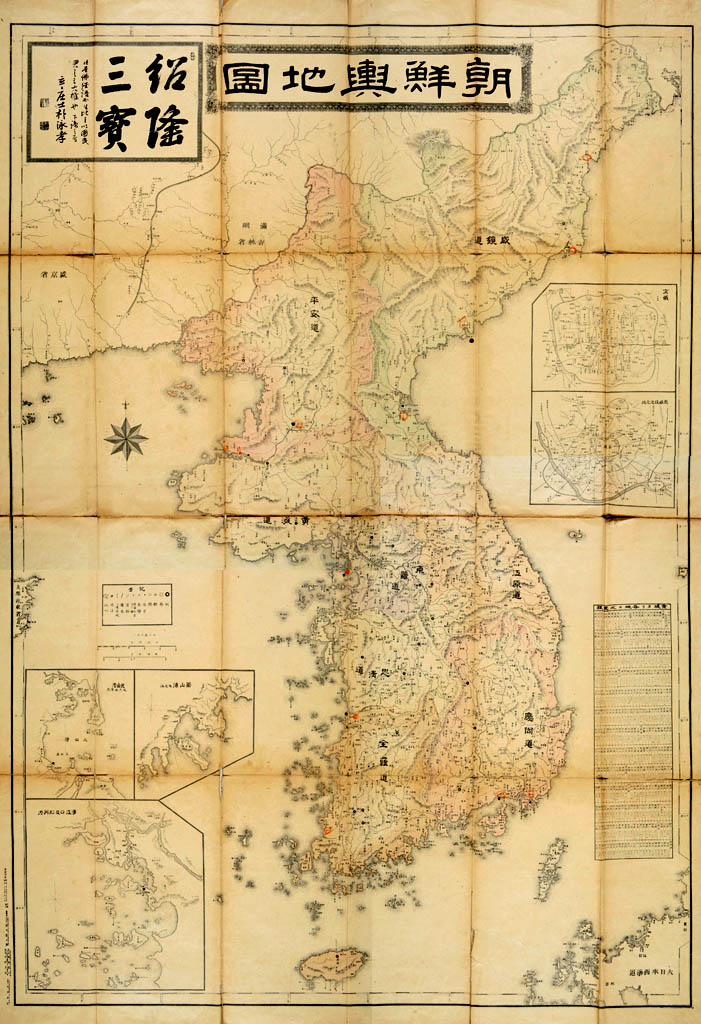

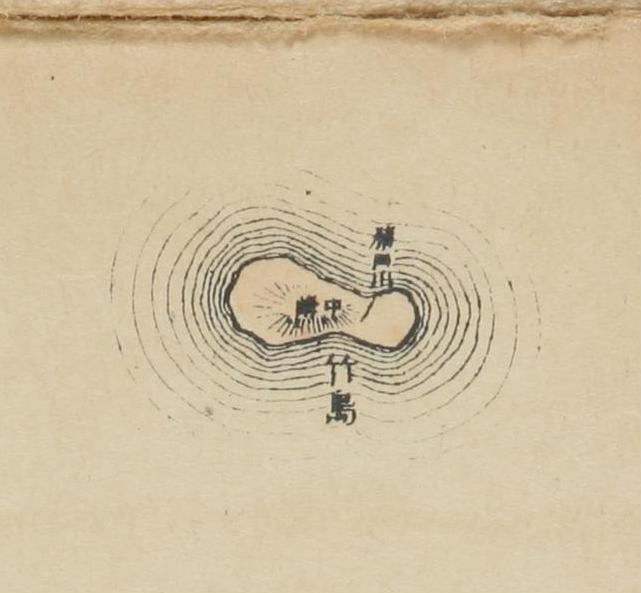
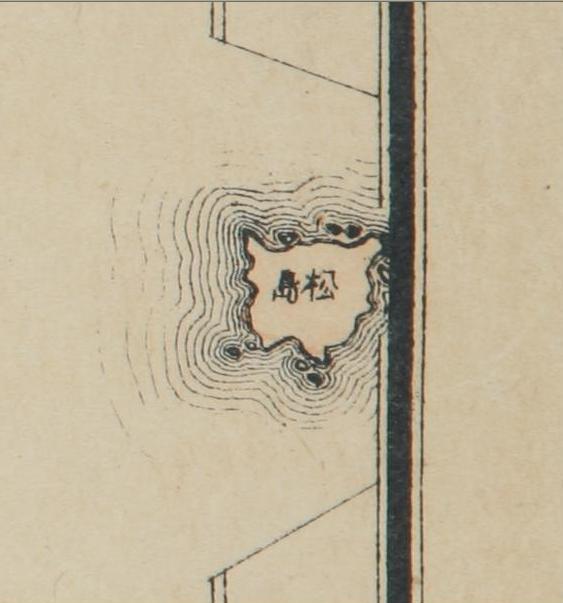
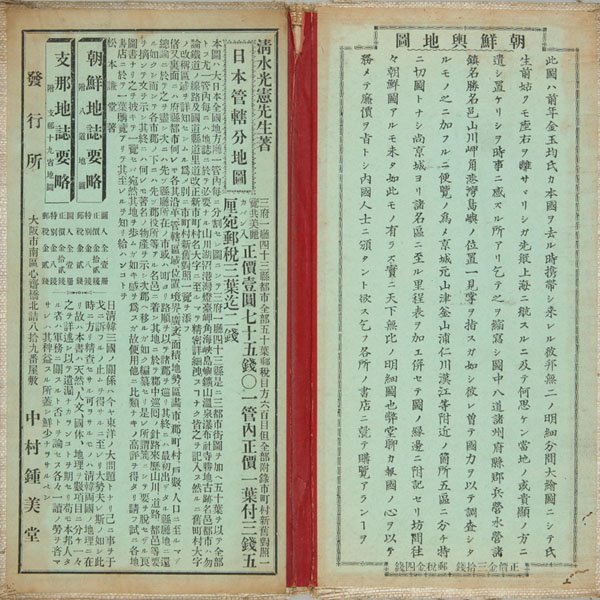
Thank you for posting many interesting maps, Gerry
ReplyDelete" This is what he surveyed by using the national power before. "
What kind of map do you think 金玉均's original one was? The shape of Ulleundo is too detailed and accurate geographically, compared to Korean maps we had seen before including Lee Gyu-won's 1882 map. But interestingly, it has 4 islets on south and 1 islets on east, to the south of Jukdo. It coincides Korean traditional recognition. But there are few rocks on the north. The explanation says it is done by Korean (national power), but it apparently inherits western maps or Japanese maps. Or Japanese altered a lot when they copied the original?
Kaneganese is right. There is no way a Korean drew this map originally. It is a copy of a European map with Seibold's era included. The wave pattern around islands is typical of European maps of the 19th Century. I think Ulleungdo is not marked as Matsushima on this map.
ReplyDeleteIf you look on Takeshima you can see the characters for 中峰 this is a derivative of 中峯 which was drawn on Ulleungdo Island by Koreans for centuries. Also as Aki pointed out there are characters on the right side that could be attributed to Ulleungdo as well.
The shape and form of Matsushima is more similar to European maps of Ulleungdo than Korean maps. The Europeans tended to draw Ulleungdo as triangular in shape as did the Japanese later on. Korean maps drew Ulleungdo as oval or round.
You are welcome, Kaneganese,
ReplyDeleteI have added to the post Aki's translation of the summary included with the map, which suggests that Kim Ok-gyun may have been involved in preparing the original Korean map.
Since Kim Ok-gyun was interested in foreign learning, he may have incorporated details of foreign maps in the original Korean map, which may explain why Ulleungdo has the detail it has.
It sound like the Japanese were impressed with the map's detail, so there may not have been much alteration, but I think the Korean map would have used the Korean name for Ulleungdo (Matsushima).
Anyway, it would be interesting to see the original map, which, according to the summary, the descendents of a former Japanese nobleman may still have. According to Wikipedia, HERE, Kim left his personal diaries with a Japanese friend named Koyama before departing for China in 1894. That means he probably left the map with Koyama, as well.
I wonder if there is any way of finding out who Koyama was and if his descendents still have the diaries and map of Kim Ok-gyun?
Some of the names of Japanese on that Wiki page sound strange to me. It must be written by Korean who doesn't know Japanese pronunciation.
ReplyDeleteIt looks like "Koyama" is Koyama Etsunosuke(小山悦之助), and according to this site, which refer to the article of "朝鮮時報", a newspaper by North Korean residents in Japan, most of Koyama's property was burnt to ashes by the Great Kanto Earthquake(関東大震災) in 1923. It says that Koyama took Kim to the house (his relative?) in Nagano and made him hide there for a while. The witing on the site by Kim was stored there.
Thank you, Kaneganese. It sounds like the map may have been lost.
ReplyDeleteYes, there are awkward English expressions in the Wikipedia article. Also, I found the following comment strange:
Later, other activists fled to the US, and Kim Okgyun led a life of mistreatment under the watch of the Japanese government. During his stay, he earned much respect from the Japanese young adults and gained adherents, such as Wada.
From what I have read, Kim was treated quite well in Japan, and the second sentence in the above passage contradicts the first.
Besides, when it comes to mistreatment, no one could have mistreated Kim Ok-gyun worse then the Korean government, who had him killed and then had his head and limbs severed from his body and displayed at different places across Korea. I notice the Wikipedia article neglected to mention that heinous act.
Gerry Bevers is misleading by saying :
ReplyDelete1.This map shows the non-existent island of Argonaut labeled as "Takeshima" (竹島) and the Korean island of Ulleungdo (鬱陵島) labeled as "Matsushima" (松島). Liancourt Rocks does not appear on the map since they are ninety-two kilometers farther southeast of Ulleungdo.
2. Kim probably traveled to Ulleungdo and knew the geography there. Therefore, the shape of Ulleungdo on this map may be as Kim Ok-gyun knew it.
-----------------------------------
This Japanese map was made by referencing Kim Ok-gyun's map. It's not known how Kim's original map looks like, but there are things for sure.
1. There was no island labeled or can be assumed as Argonaut in Kim's map. Western mapping error didn't influence Korea at all. It's certain there were two islands which are Ulleongdo and Usando in Kim's map. The mapmaker 清水常太郎 seems to have no doubt in regarding Usando as Japanese traditional Matsushima. He added himself or copied from Kim's map "中峯" Korean old name for the mountain "Seonginbong(聖人峰)" in Ulleongdo, which obviously indicates Takeshima in this map is today's Ulleongdo. As Takeshima is Ulleongdo, Matsushima can't be other island than Dokdo. Unlike pro-Japanese people today, 清水常太郎 clearly understood Usando is Dokdo and considered Usando as Korean land.
2. The reason the shape of Matsushima(=actual Dokdo) in Japanese maps is like Ulleongdo is the influence of western maps which mistakenly labeled Ulleongdo as Matsushim, the traditional Japanese name for Dokdo. Therefore, the Japanese mapmakers copied the shape of Matsushima in western maps thinking it was Japanese Matsushima(=Dokdo) by the name. "朝鮮輿地図" is a perfect example that Matsushima in the shape of Ulleongdo can be Dokdo.
Kim Ok-gyun knew how Ulleongdo looked like by visiting to Ulleongdo at that time? I think it's the most ridiculous statement Gerry Bevers made in this blog.